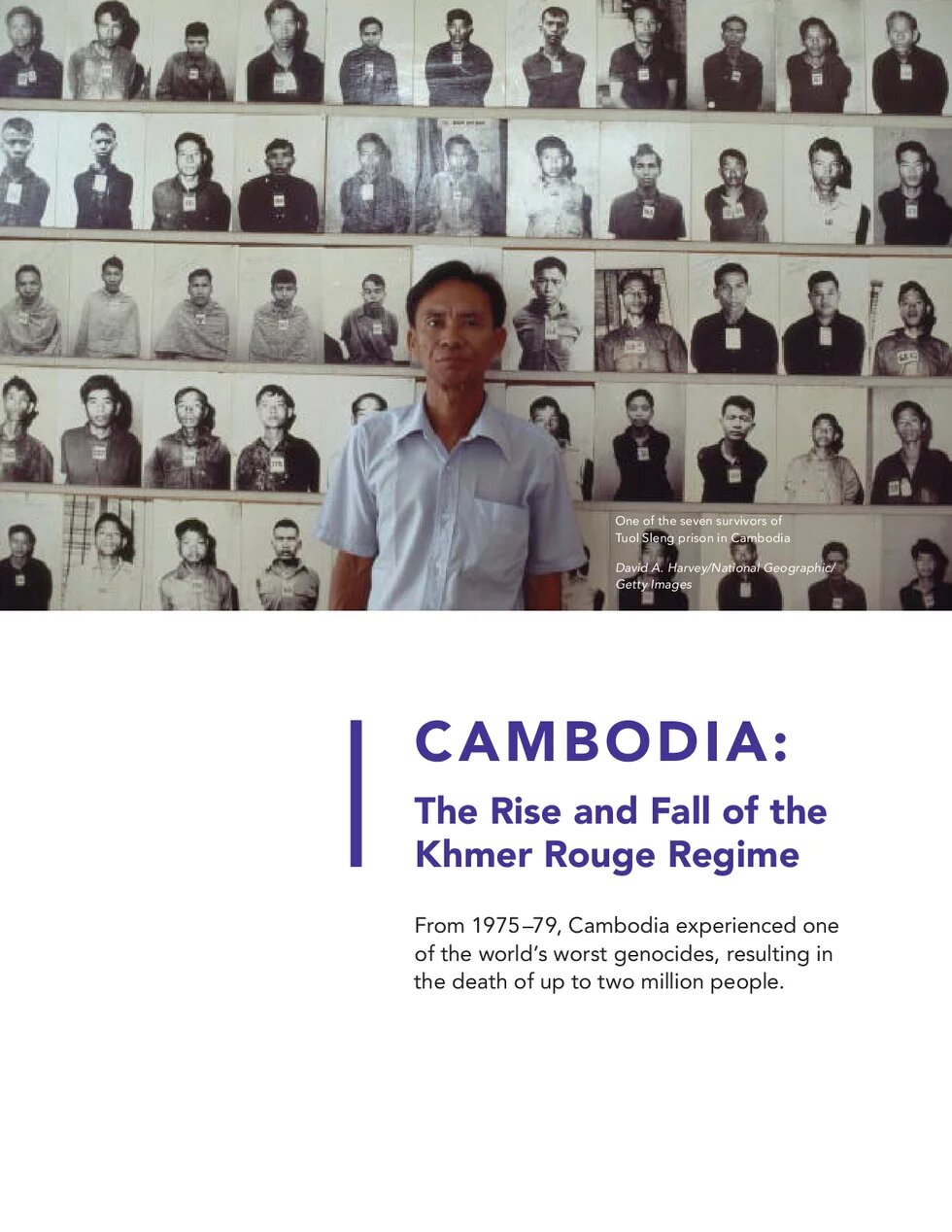This publication is a learning module found at the Asia Pacific Curriculum website. It is a recommended reading material to understand backgrounds of the evolution of Khmer Rouge regime. It is written by Dr. Eve Monique Zucker who is an independent scholar and research affiliate of the Council on Southeast Asian Studies, Yale University.

When one thinks about Cambodia, two things often come to mind. The first is Angkor Wat, an ancient temple complex built during the Angkorian period from the ninth to 15th centuries. The Angkorian period featured a powerful and vast Khmer Empire that was highly cultured and produced magnificent art and architecture. For many Cambodians, this period signifies the pinnacle of their civilization. The second thing that often comes to mind evokes a starkly different set of images: the period of the Khmer Rouge, which ruled the country from 1975 to 1979. This regime tried to purify the nation of suspected corruption and counter-revolutionary tendencies in order to bring about its utopian communist vision for Cambodia. But the regime’s ideology and tactics were so extreme that it targeted almost all aspects and segments of Cambodian society for destruction and was ultimately responsible for the deaths of an estimated two million of the country’s seven million people.
Please click here to read the whole module
Attribution: "This document, 'The Rise and Fall of the Khmer Rouge Regime,' was written by EVE MONIQUE ZUCKER and is copyright under Asia Pacific Foundation of Canada. It is provided here for informational purposes only."